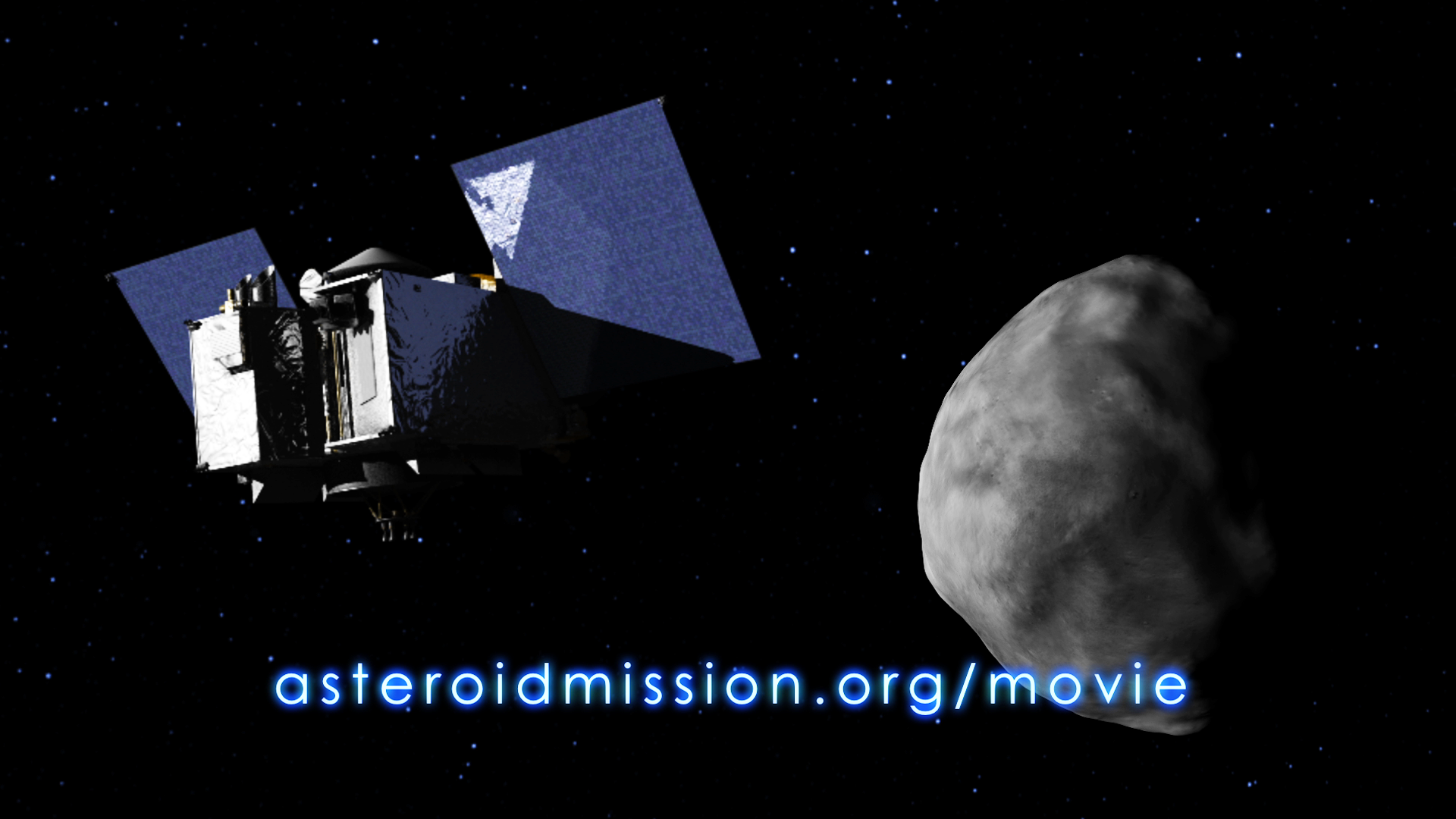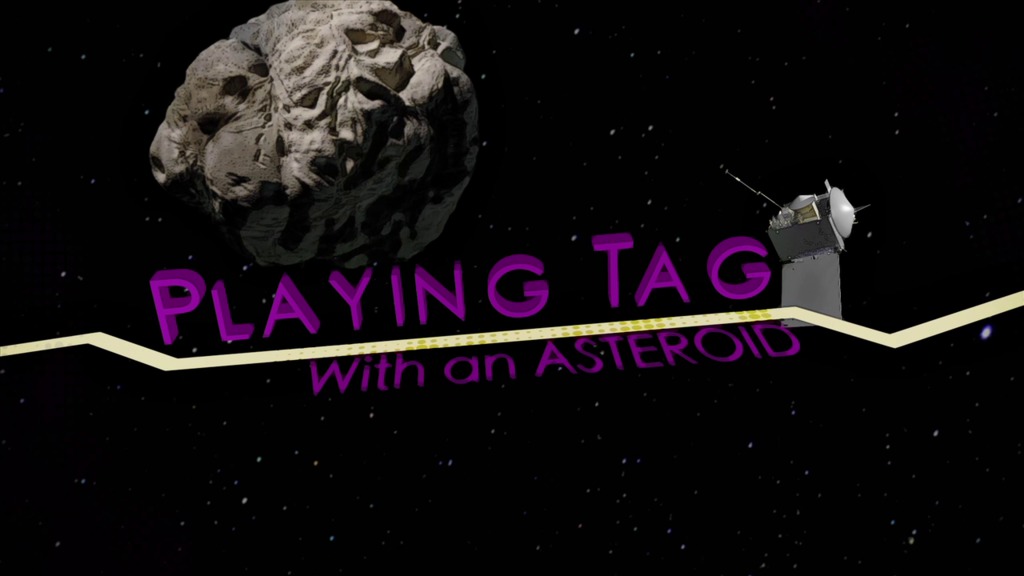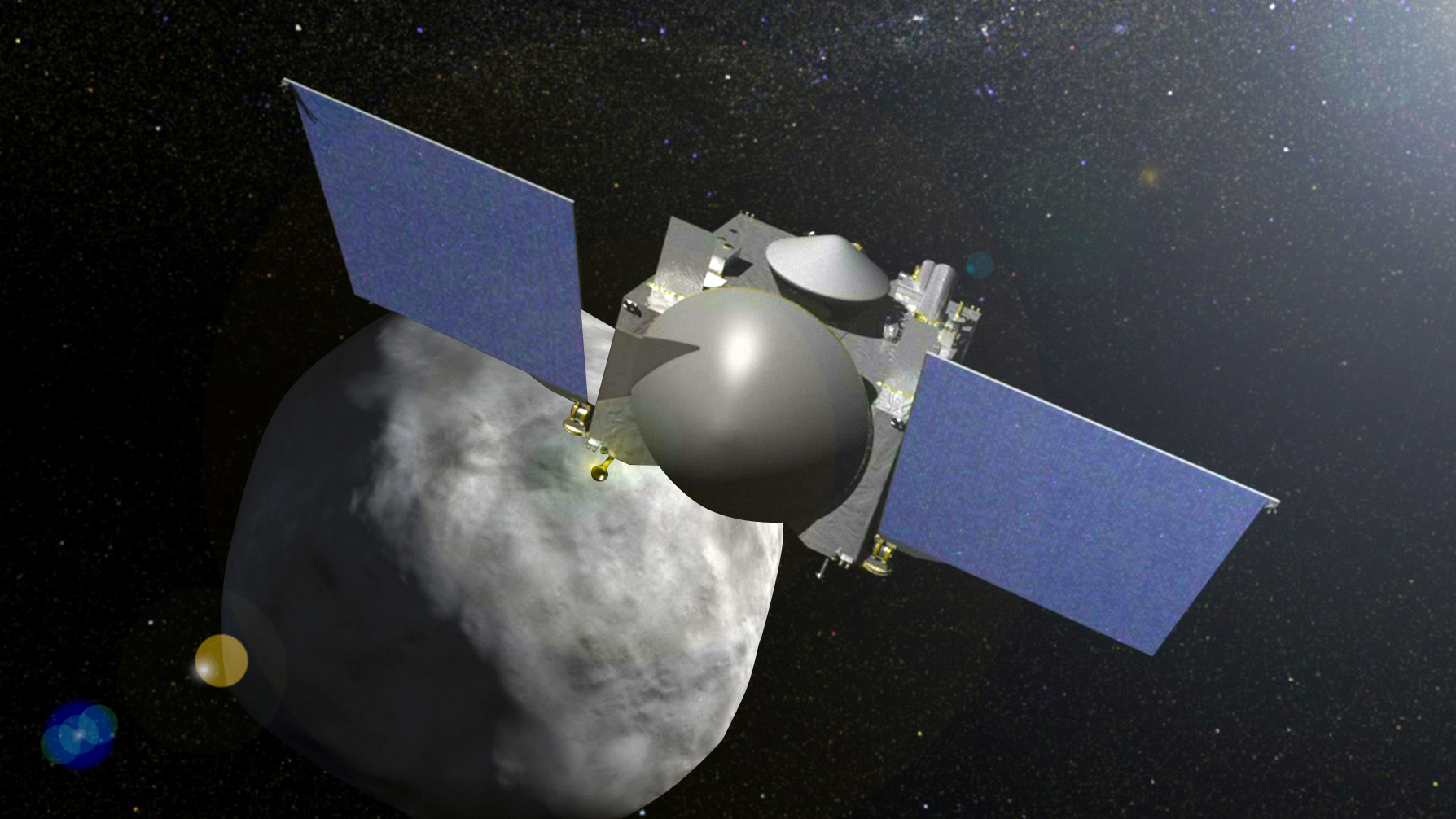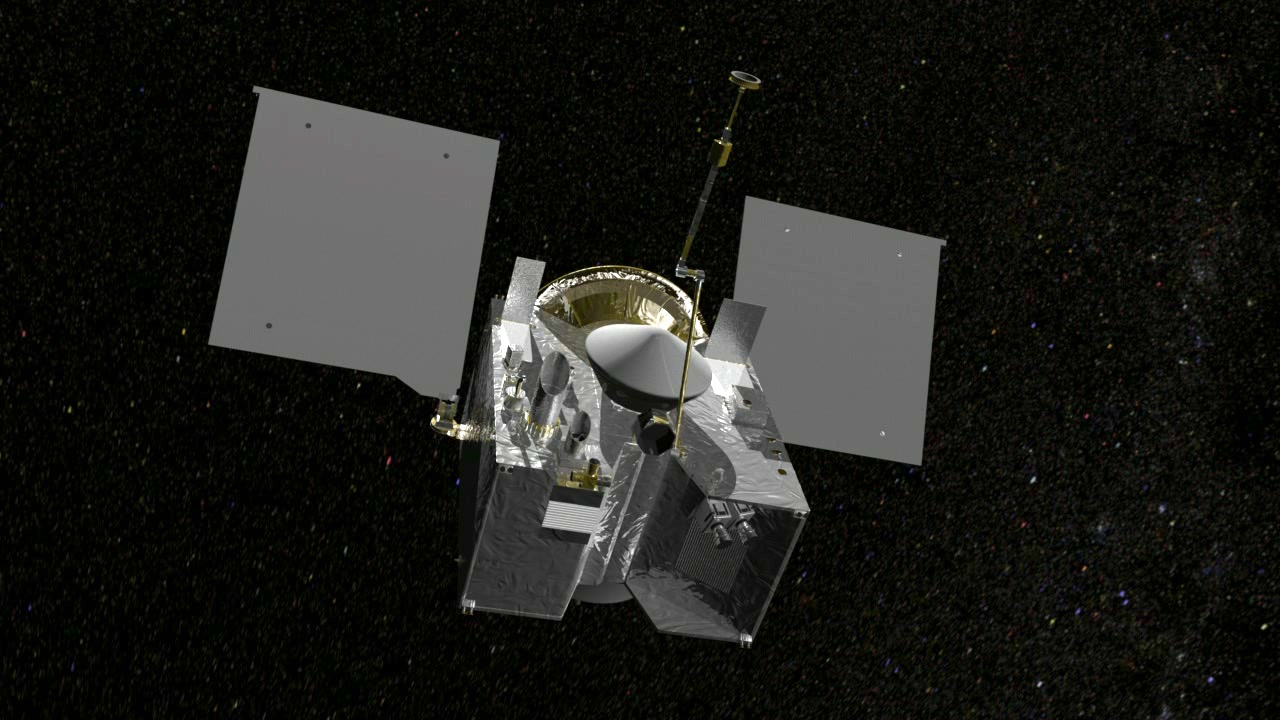Older OSIRIS-REx Content
Overview
This gallery links to older content for the OSIRIS-REx mission to asteroid Bennu and back. Please visit the OSIRIS-REx gallery for up-to-date content: https://svs.gsfc.nasa.gov/Gallery/OSIRIS-REx.html
Older Produced Videos
Bennu's Journey Teaser
Go to this pageThe solar system today is an orderly place, much quieter than it was in its turbulent youth. How did our Sun, the Earth and the planets evolve from a whirlpool of gas, dust, and fiery droplets of molten rock? To answer this question, scientists are planning to visit asteroid Bennu (1999 RQ-36), which is composed of the same raw ingredients that created the planets. Bennu is a survivor of our solar system's early chaos, and following its journey will teach us a great deal about our own origins. This video is the official teaser for Bennu's Journey, a signature animation of NASA's OSIRIS-REx mission; the full-length video will be released in November 2014. ||
Playing Tag With an Asteroid
Go to this pageWhat’s the best way get a sample of an asteroid? Play tag with it! That’s the plan for OSIRIS-REx, a NASA spacecraft that will approach the asteroid Bennu in 2018. The collection will be done with an instrument on board called the Touch-And-Go Sample Acquisition Mechanism, or, TAGSAM. Learn how it works in this video. ||
OSIRIS-REx Mission Overview
Go to this pageOSIRIS-REx will visit a Near Earth asteroid called Bennu and return with samples that may hold clues to the origins of the solar system and perhaps life itself. It will also investigate the asteroid's chance of impacting Earth in 2182. For the mission, NASA has selected the team led by Principal Investigator Dr. Dante Lauretta from the University of Arizona. NASA GSFC will manage the mission and Lockheed Martin Space Systems will build the spacecraft. Arizona State University will supply the OTES instrument; NASA GSFC will supply the OVIRS instrument; the Canadian Space Agency will supply the OLA instrument; the University of Arizona will supply the OCAMS camera suite; Harvard/MIT will supply the REXIS instrument; and Flight Dynamics will supply the KinetX instrument. ||
OSIRIS-REx Targets Near-Earth Asteroid
Go to this pageOn February 15, 2013, a 45-meter asteroid called Duende (formerly 2012 DA14) passed within 28,000 kilometers of Earth - the closest approach on record for an object of this size. Although such Near-Earth Objects, or NEO's, cross our planet's orbit on a regular basis, only a handful are large enough to pose a threat. One of these objects is asteroid Bennu (formerly 1999 RQ36), a "leftover" from the formation of our solar system. In an effort to better understand NEO's and our planet's own origins, NASA is sending the OSIRIS-REx spacecraft to asteroid Bennu to study the evolution of its orbit and retrieve a sample for return to Earth. ||
Name That Asteroid!
Go to this pageThe OSIRIS-REx mission is going to an asteroid to collect and return a sample to Earth. OSIRIS-REx will launch in 2016, visit the asteroid from 2018 to 2021, and return a sample to Earth in 2023. Scientists will study the asteroid’s orbit, composition, and characteristics to answer questions about the early solar system, the building blocks of life, and potential impact hazards. Instead of traveling to (101955) 1999 RQ36, the asteroid’s provisional designation, we’re asking for help to find a new name. The Planetary Society, NASA’s OSIRIS-REx mission, and the discovers at MIT’s Lincoln Lab will recommend selected names to the International Astronomical Union for selection.Contestants must choose a name, explain their choice, and submit the application on the Planetary Society website.The contest starts Tuesday, September 4, 2012. The deadline is Sunday, December 2, 2012.For contest rules, guidelines, and application visit: www.planetary.org/name ||
Destination Asteroid
Go to this pageNot far from Earth, dark bodies of rock circle the sun in lonely orbits. These near Earth objects, or NEOs, are asteroids found outside the traditional belt between Mars and Jupiter. Protected from the gravitational tugs and tumbles that affect objects found closer to the gas giant, these asteroids may contain clues about the origins of the solar system. That's why experts from NASA and The University of Arizona want to send a research vehicle to collect a sample. That's OSIRIS. Once approved, the OSIRIS vehicle would leave Earth on a multi-year mission to map and collect samples from a particular NEO called RQ-36.In DESTINATION: ASTEROID, we look behind the scenes as a team of government scientists demonstrates for a visiting group of reporters how the mission will work. This short film explores the basics of the mission, including scientific goals, technical design plans, and a timeline of planned events. Imagination and invention meet in this spirited paean to NASA's legacy for great feats of exploration and discovery. Join us as we set our navigation systems to DESTINATION: ASTEROID. ||
Older Animations
OSIRIS-REx Animations
Go to this pageTHIS PAGE FEATURES OLDER CONTENT FOR OSIRIS-REx. NEWER CONTENT IS AVAILABLE ON THE OSIRIS-REx GALLERY. ||






